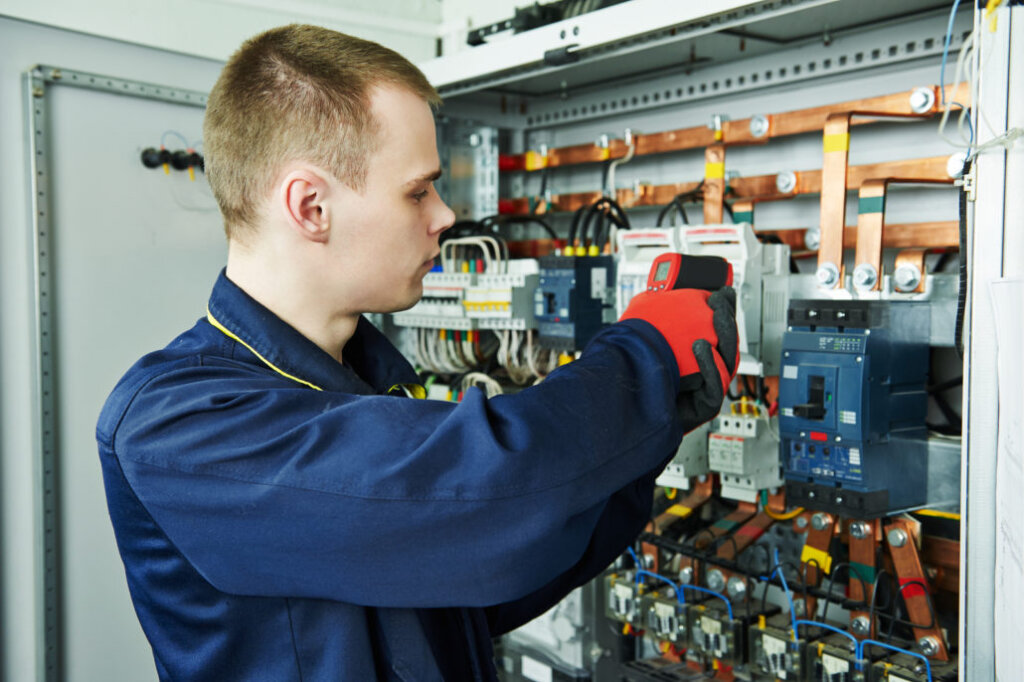
Don’t let your life flash before your eyes
Electrical wiring accidents are a common threat for electrical workers and protecting your team members with the right tips will keep the people around you safe.
Are you an electrical worker or do you know someone who works in the field? Learn about one of the most common electrical wiring accidents and how to prevent it from happening in your workplace. Even for an experienced electrician, it is important to keep in mind that there are serious risks if the equipment is not used properly or the right safety measures aren’t taken. The following tips were generated to help prevent electrical wiring and Arc Flash incidents.
Arc Flash Awareness
U.S. Department of Labor Bureau of Labor Statistics states that 77% of all electrical injuries are caused by Arc Flash incidents.
According to the Arc Advisor, an Arc Flash happens when electrical current flows through an air gap between conductors. Accidents caused by touching a test probe to the wrong surface or slipped tool are the most common cause of an arcing fault, a high power charge of electricity between two or more conductors. When the discharge translates into heat, it can break down the wire’s insulation and thus cause a potential for an electrical fire. Arc-Flash accidents can be due to carelessness, worn or broken conductor isolation, exposed live parts, loose wire connections improperly maintained switches and circuit breakers, high voltage cables, static electricity, and damaged tools and equipment.
An Arc Flash can cause severe skin burns as a result of direct heat exposure. The temperatures of the arc can reach up to roughly four times the temperature of the sun. The high-intensity flash can also cause damage to your vision.
- Arc Blast Awareness — As the Arc Flash explosion emits heat and light, there is also a pressure wave present which is the Arc Blast. An Arc Blast is a high-pressure sound wave caused by a sudden arc fault. The risk of the Arc Blast is also a risk factor in the electrical field. Arc Blast can cause a person to be blown off of their feet. Other injuries include loss of memory or brain function from a concussion, hearing loss, and physical injuries from being blown off ladders, into walls, etc.
According to Electrical Engineering Portal, Blast pressures can exceed 2000 pounds per square foot, knocking workers off ladders or collapsing workers’ lungs. These events occur very rapidly with speeds exceeding 700 miles per hour making it possible for a worker to get out of the way.
- Tips To Prevent Incidents
- De-Energize — No one has ever reported having been killed or injured from an Arc-Flash while working on de-energized equipment. If there is no option for equipment to be de-energized, electrical workers must be “qualified”, trained, wear appropriate personal protective equipment and follow all applicable OSHA standards to minimize risk factors.
- Lockout/Tagout — This refers to making sure that machines are turned off, and locked, and go through routine maintenance or service work before being able to be operated again. Always remembering to de-energize and follow established lockout/tag-out procedures can save lives.
- Always Wear Personal Protective Equipment (PPE) Properly — The equipment is very similar to the “bunker gear” which is worn by firefighters. The hazards of Arc Flash/Arc Blast are very similar to the hazards faced by firefighters, which explains why their protective equipment is similar.
Sources: http://arcadvisor.com/faq/what-is-arc-flash
http://electrical-engineering-portal.com/10-common-causes-of-arc-flash-and-other-electrical-accidents



